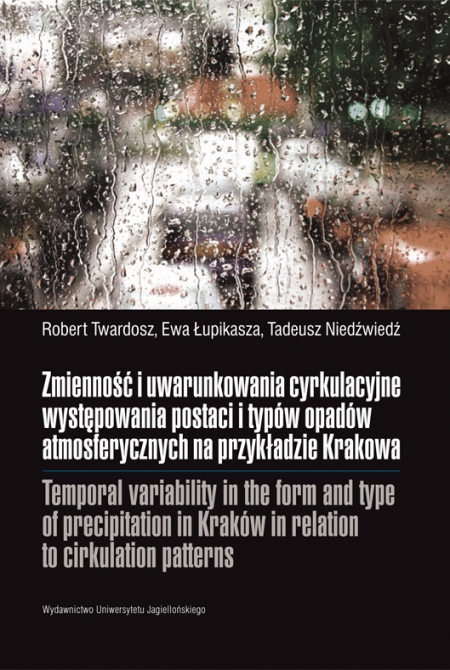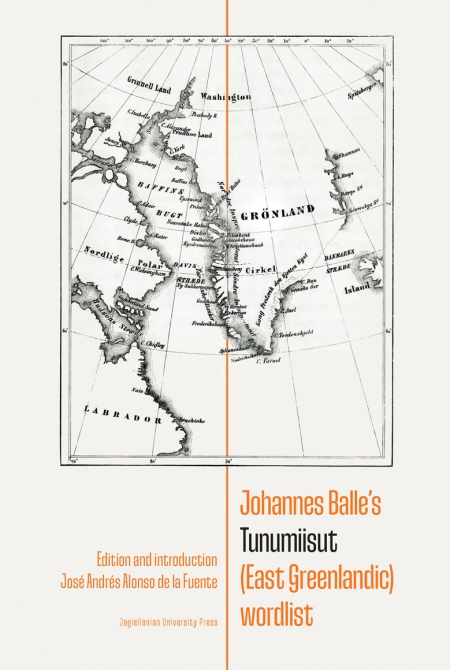
Zmienność i uwarunkowania cyrkulacyjne występowania postaci i typów opadów atmosferycznych na przykładzie Krakowa
Liczba stron: 174
Format: B5
Rok wydania: 2011
Data premiery: 28.09.2011
Opis książki
Na podstawie badań opartych na serii obserwacji opadu w Krakowie, obejmującej prawie półtora wieku (1863-2008), katalogu typów cyrkulacji atmosferycznej, kalendarza mas powietrznych i frontów atmosferycznych oraz wskaźników cyrkulacji nad południową Polską i Atlantykiem Północnym rozpatrzono cechy charakterystyczne, częstość i wielkość opadów atmosferycznych w Krakowie, jak równie˝ ich uwarunkowania cyrkulacyjne. Wykorzystano cały jednorodny ciąg sum dobowych opadów oraz informację o jego postaci i typie z okresu pomiarów instrumentalnych, a także liczbę dni z opadem z lat 1812-1855.
Jest to pierwsze tak szczegółowe, bazujące na obszernym i wiarygodnym materiale wyjściowym, opracowanie zamienności rocznej i wieloletniej opadów z rozróżnieniem na ich postać i typ w Polsce i Europie Środkowej. Wyniki uzyskane z opracowania krakowskiej serii opadów są istotne z punktu widzenia badania zmian i zamienności klimatu w skali regionalnej oraz praktycznych zastosowań w wielu dziedzinach działalności człowieka, m.in. w komunikacji i budownictwie.
The study investigates a number of characteristics of precipitation, including its frequency and depth, in the context of atmospheric circulation in Krakow. The work is based on a nearly one and a half-century long (1863-2008) record of measured precipitation in the city, on a catalogue of atmospheric circulation types, a calendar of air masses and atmospheric fronts, as well as on circulation indices for southern Poland. The entire homogeneous series of daily precipitation data starting from the beginning of instrument-based measurements was used, as well as information about its form and type and the number of days with precipitation during the period 1812-1855.
This is the first study investigating the annual and multi-annual variability of precipitation broken down into form and type in Poland and in Central Europe that combines this level of detail and a broad and credible set of input data. Results obtained using the Krakow precipitation record are important from the point of view of climate change and climate variability at a regional scale and for practical uses in many aspects of human activity, including transport and construction.
Jest to pierwsze tak szczegółowe, bazujące na obszernym i wiarygodnym materiale wyjściowym, opracowanie zamienności rocznej i wieloletniej opadów z rozróżnieniem na ich postać i typ w Polsce i Europie Środkowej. Wyniki uzyskane z opracowania krakowskiej serii opadów są istotne z punktu widzenia badania zmian i zamienności klimatu w skali regionalnej oraz praktycznych zastosowań w wielu dziedzinach działalności człowieka, m.in. w komunikacji i budownictwie.
The study investigates a number of characteristics of precipitation, including its frequency and depth, in the context of atmospheric circulation in Krakow. The work is based on a nearly one and a half-century long (1863-2008) record of measured precipitation in the city, on a catalogue of atmospheric circulation types, a calendar of air masses and atmospheric fronts, as well as on circulation indices for southern Poland. The entire homogeneous series of daily precipitation data starting from the beginning of instrument-based measurements was used, as well as information about its form and type and the number of days with precipitation during the period 1812-1855.
This is the first study investigating the annual and multi-annual variability of precipitation broken down into form and type in Poland and in Central Europe that combines this level of detail and a broad and credible set of input data. Results obtained using the Krakow precipitation record are important from the point of view of climate change and climate variability at a regional scale and for practical uses in many aspects of human activity, including transport and construction.
Język publikacji
Pl, En
Autorzy
Robert Twardosz
, Ewa Łupikasza
, Tadeusz Niedźwiedź
ISBN: 978-83-233-3177-3
Kraj pochodzenia producenta: Polska
POLECANE KSIĄŻKI
105,00
zł
84,00
zł
NOWOŚCI

Zmienność i uwarunkowania cyrkulacyjne występowania postaci i typów opadów atmosferycznych na przykładzie Krakowa
Zmienność i uwarunkowania cyrkulacyjne występowania postaci i typów opadów atmosferycznych na przykładzie Krakowa
Wybierz rozdziały:
Wartość zamówienia:
0.00 zł























